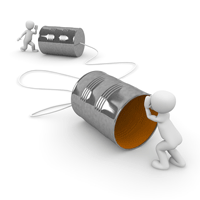Weekend Optimization Tips for the Mobile Web

Mobile website performance is crucial during this holiday shopping season. Not only are 86 percent of consumers planning to use their phones this holiday season, but they also have high expectations of how their mobile experience should and will work, according to Bharath Gowda who is the strategic solutions director at Compuware Technology Performance Services.
"If brands don't live up to those expectations, they will soon lose credibility in the shopper's eyes," said Gowda. "Website performance must be optimal during the holiday season because mobile networks - which are typically slower - become even more clogged from overuse during critical shopping times, such as Black Friday."
Website Magazine caught up with Gowda who shares the importance of mobile website performance, as well as tips to increase conversions on mobile and speed up page load time.
Why is mobile website performance so crucial during the holiday shopping season?
Gowda of Compuware: In addition [to what was discussed above], when consumers utilize their mobile phones for holiday shopping, their needs are very urgent. They're typically close to making a purchase and simply need to quickly check a price or a product attribute. Because of this urgency, if a mobile user can't find what they're looking for quickly, the sale can easily be lost to a competitor with a higher performing mobile website. A good mobile user experience is always important, but during the holidays, it can really serve as a differentiator.
Website performance is so crucial during the holiday shopping season because poor performance has harsher consequences this time of year. Not only can you lose sales during a time in which your margins should increase, but also you can lose potential new customers. For this reason, retailers must reduce heavy content that will slow down mobile websites and constantly monitor these sites for problems.
How can slow-loading sites negatively impact holiday sales?
Gowda:
1. Lost sales: The holiday rush creates frantic shoppers working to cross off large shopping lists in a short amount of time. Increasingly, consumers are making purchases straight from their phone. If they can't get through to the shopping cart quickly, they will find the product elsewhere.
2. Lost retail leads: While straight-from-phone purchases are increasing, it is more common for consumers to utilize their phones during the final research stage before heading to the store to make a purchase. This happens in the car, on the bus, waiting in line and even in the store itself. If shoppers can't get answers fast, they will hesitate to make a purchase at that store.
3. Negative brand impressions. In the earlier days of the mobile Web, consumers rarely blamed brands for slow sites - instead, they blamed their phones and cellular networks. But those days are gone. Performance leaders like Amazon and the growing wave of young buyers have increased performance expectations. If you don't perform, consumes will begin to view you as a brand that doesn't get it.
There is certainly a long-term impact of poor performance. Retailers must think of a slow loading or underperforming website as a poor customer service experience. Similar to, for example, a bad call center experience, a poorly performing site leaves a bad taste in customers' mouths. This cost of performance then has a compounding effect: you don't simply lose that transaction or sale, but also you lose potential new customers and even loyal customers.
What "weekend website optimization" tips can you provide for ecommerce merchants specifically to increase conversions on mobile?
Gowda: First, take a step back and understand the purpose of your mobile site or application. Decide what it is that your customers want, provide it and then get out of the way. If your primary goal is to sell online via mobile, get consumers through product information and into the cart with minimal distraction. Mobile is not the place consumers go to browse and be convinced. Most mobile use cases are much too targeted and urgent for that. On the other hand, if your goal is to drive to brick-and-mortar retail, then get customers product information better, faster and without distraction
In addition, stick to the essentials. What is needed to fulfill your customers' needs? Often a mobile user is poised to buy if they can get clarity on just one or a couple product details. The selling is all but done, but it won't happen if you have third-party tags, heavy social media integration, promotional carousels and fancy animation standing in the way.
It's also important to remember that website optimizations are not a onetime activity. You must constantly monitor interactions taking place on your site not only to flag problems, but also to understand how users are interacting with your site. It's important to strike a balance between the information you want to provide and the information your customers want.
What "weekend website optimization" tips can you provide for ecommerce merchants specifically to speed up page load time?
Gowda:
1. Reduce animation - Designers use animation to catch a user's eye, but to most users, animation simply looks like items are still loading. Your mobile website should not be set up to attract customers with animation; it should function to serve customers' needs without interruption. Especially during the holidays, mobile visitors are in a hurry. Animation only further slows down the process.
2. Reduce reliance on third parties - Many think that third party items load last, after the "good" content. However, there is simply no guarantee when it comes to what order your items load. The more non-user-facing content you force through via mobile, the longer consumers will have to wait for the content that actually sells products. Pair this with the congestion your network will experience on Black Friday and throughout the holidays, and you may find that an issue with a third party is directly impacting your customers or preventing your content from loading.
3. Reduce complex content containers, like carousels - Simple, static content is best. The more you introduce complex presentations, like rotating carousels or interactive elements, the slower and more unpredictable your page will load. Complex designs call for more technology, like complex CSS structures and JavaScript, to make them work. A masthead image that is part of an interactive carousel can take five times longer to render than a single image.
4. Check your render order, lighten & repeat - Mobile Web pages rarely render in the order you expect them to thanks to mobile browser behavior and the inconsistent speed of cellular connections. For instance, your page might request social integration tags in your footer after it requests your good content up top, but if the good content gets snagged on a slow connection thread, the browser can get preoccupied and render less important items first. Your only weapon against this is to keep the page as light as possible. When all you request from your browser is good content, it will more easily overcome connection speed to render it.
5. Be flexible. You must constantly monitor your mobile website and have a process in place to catch errors. There will be multiple changes made throughout the holiday season - new promotions will be added, prices will change - and changes can easily result in error. If you are proactive and catch errors early, it will be easier to find the source of and reason for the error.
What barriers exist for Internet retailers when it comes to mobile IT and what tips do you have to avoid them this holiday season?
Gowda:
1. The desire for design. Retailers' marketing teams will often desire elaborate mobile content in the name of persuasion. The retailer's IT team must be in a position to reject complicated designs in the name of performance.
2. The underestimation of increased mobile traffic. Black Friday continues to drive higher mobile traffic each year. If mobile infrastructure isn't every bit as robust as your traditional website, you can expect problems. Perform comprehensive testing across an accurate mix of channels, including mobile.
3. The need for location services. By far, the most common use case for mobile sites of brick-and-mortar stores is to find store locations. Most brands use a dynamic service to find stores based on location, but when visits skyrocket, those services will often get overwhelmed and break. Find a way to cache all store location results without this service.
4. A limited view of performance. Retailers must have a more nuanced view of performance - brands need to ensure that they have a strong sense of where performance typically breaks down between users and devices. If you can contextualize the cost of performance, you can make more meaningful decisions on where to make investments. If you don't know how good or bad you are performing and what customers expect, you're just leaving money on the table.
5. A limited focus. During the holidays, mobile retail is not just about the transaction - it's about an omnichannel experience. Users don't necessarily want to buy your product from their smartphone, but they're likely to check via phone if a certain product is at your store. For this reason, focus on more than just optimizing the shopping cart experience. Understand how your users are interacting with you via the mobile Web and optimize that experience.

Subscribe to Our Newsletter!
Latest in Mobile Marketing










